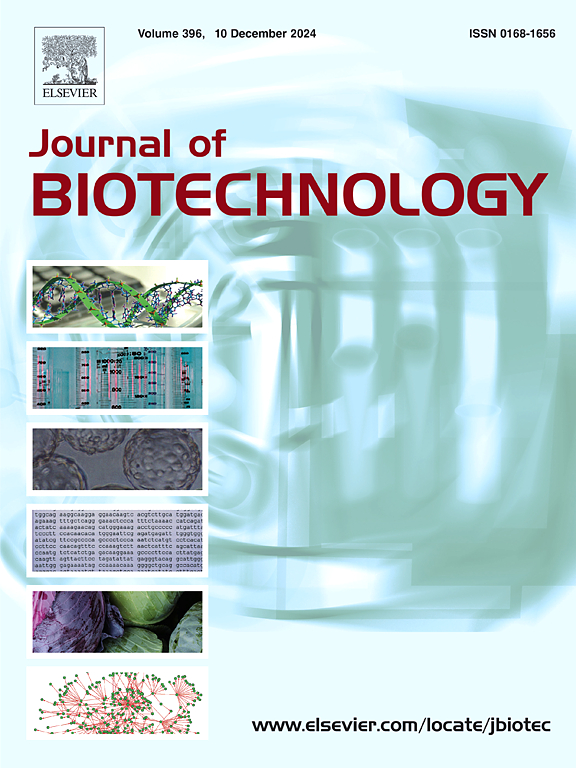Ethanolysis of degummed soybean oil using magnetic CLEAs from Eversa® Transform
IF 4.1
2区 生物学
Q2 BIOTECHNOLOGY & APPLIED MICROBIOLOGY
引用次数: 0
Abstract
Eversa@ Transform magnetic crosslinked enzyme aggregates (Eversa-mCLEA) have been used to produce fatty acid ethyl esters (FAEEs) through the ethanolysis of soybean oil. Some variables influencing this reaction were studied using an experimental statistical design. After 12 hours of reaction, a maximum FAEEs yield of 64 wt% was obtained using 4 Uest/g oil of Eversa-mCLEA, an anhydrous ethanol/refined oil molar ratio of 11, and a temperature of 40°C. Degummed oil and hydrated ethanol were used as more cost-effective alternatives, leading to an increase in FAEEs yield (up to 73 wt%). The initial reaction rate increased with a lower molar ratio of hydrated ethanol/degummed oil; however, the final yield remained similar. The combined use of Eversa-mCLEA and Lipozyme 435 resulted in 86 wt% FAEEs and 4 wt% of free fatty acids (FFAs) after 24 hours. A caustic polishing step of the product yielded 90 wt% FAEEs and 0.17 wt% FFAs. These findings show that, using these substrates, a more effective purification step (such as fractional distillation) is required for the product to meet international standards for biodiesel commercialization.
利用Eversa®Transform公司的磁性CLEAs对脱胶大豆油进行醇解
利用Eversa@ Transform磁交联酶聚集体(Eversa-mCLEA)对大豆油进行醇解制备脂肪酸乙酯(faee)。用实验统计设计研究了影响该反应的一些变量。反应12 小时后,在4 Uest/g Eversa-mCLEA油、无水乙醇/成品油的摩尔比为11、温度为40℃的条件下,FAEEs的最大产率为64 wt%。脱胶油和水合乙醇被用作更具成本效益的替代品,导致FAEEs的产量增加(高达73 wt%)。水合乙醇/脱胶油的摩尔比越低,初始反应速率越快;然而,最终的产量仍然相似。联合使用Eversa-mCLEA和Lipozyme 435在24 小时后产生86 wt%的faee和4 wt%的游离脂肪酸(FFAs)。该产品的碱抛光步骤产生90 wt% faee和0.17 wt% FFAs。这些发现表明,使用这些底物,需要更有效的净化步骤(如分馏),以使产品达到生物柴油商业化的国际标准。
本文章由计算机程序翻译,如有差异,请以英文原文为准。
求助全文
约1分钟内获得全文
求助全文
来源期刊

Journal of biotechnology
工程技术-生物工程与应用微生物
CiteScore
8.90
自引率
2.40%
发文量
190
审稿时长
45 days
期刊介绍:
The Journal of Biotechnology has an open access mirror journal, the Journal of Biotechnology: X, sharing the same aims and scope, editorial team, submission system and rigorous peer review.
The Journal provides a medium for the rapid publication of both full-length articles and short communications on novel and innovative aspects of biotechnology. The Journal will accept papers ranging from genetic or molecular biological positions to those covering biochemical, chemical or bioprocess engineering aspects as well as computer application of new software concepts, provided that in each case the material is directly relevant to biotechnological systems. Papers presenting information of a multidisciplinary nature that would not be suitable for publication in a journal devoted to a single discipline, are particularly welcome.
 求助内容:
求助内容: 应助结果提醒方式:
应助结果提醒方式:


